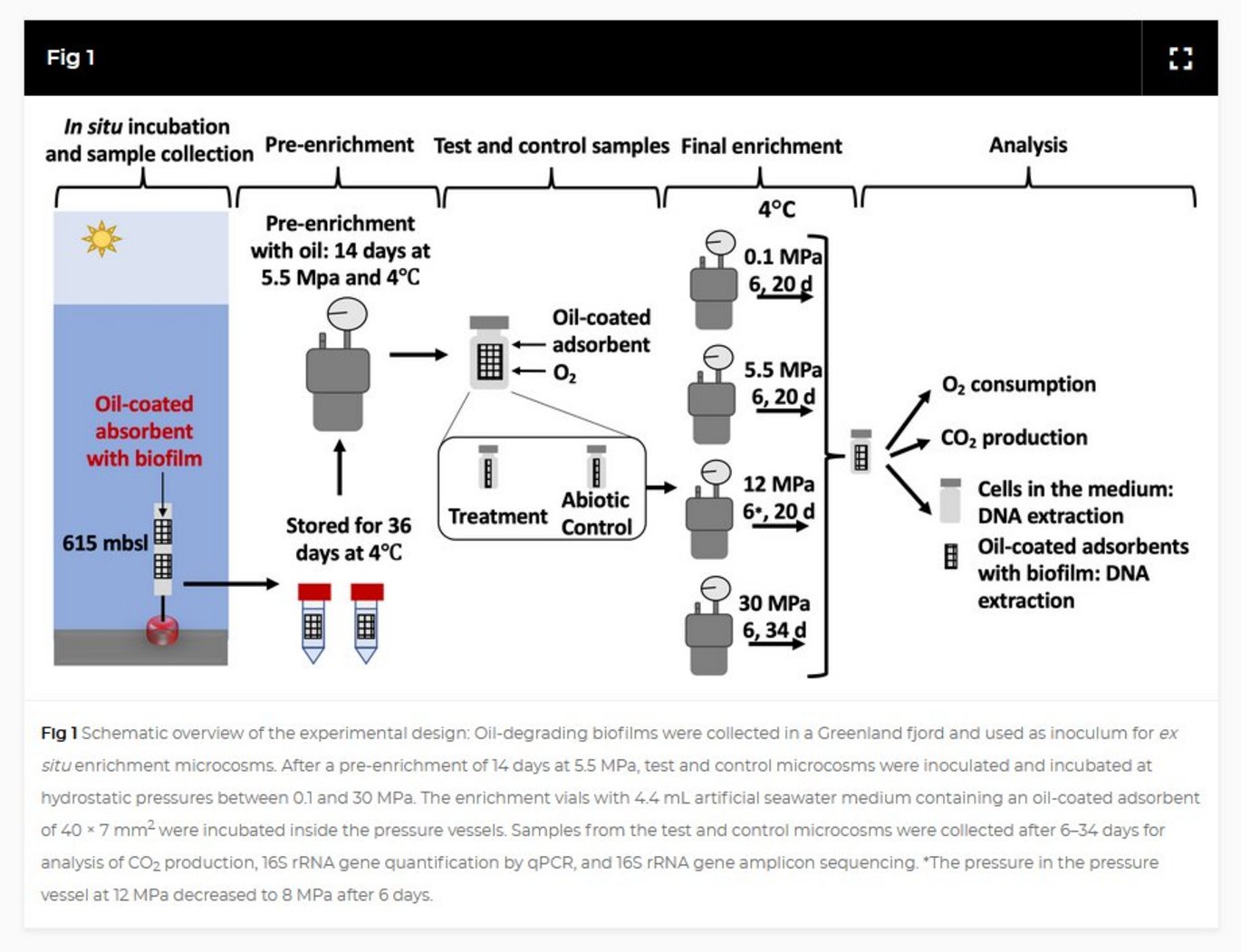The effect of hydrostatic pressure on the activity and community composition of hydrocarbon-degrading bacteria in Arctic seawater
New publication by Marietou A, Schmidt JS, Rasmussen MR, Scoma A, Rysgaard S, Vergeynst L.

Abstract:
There is a renewed interest in hydrocarbon biodegradation in Arctic seawaters due to increasing ship traffic and risk for oil spills. Most studies, however, fail to address the effect of increasing pressure as an environmental parameter. Here, we conducted a series of pressurized enrichments (0.1–30 MPa, 4°C) inoculated with a 100-day-old hydrocarbon-degrading biofilm collected from 615 m deep in Arctic seawater. Cell-specific CO2 production rates provided a clear summary of the observed microbial activity: a bloom of a hydrocarbon degrading-biofilm generating 0.82–0.90 fmol CO2⋅bacterial gene−1⋅day−1 at 0.1–8 MPa, but undetectable activity at 30 MPa until day 6. At 30 MPa, the microbial activity increased between days 6 and 34 with an average rate of 0.36 ± 0.08 fmol CO2⋅bacterial gene−1⋅day−1. Amplicon sequencing revealed no differences in the microbial community composition at 0.1–12 MPa. While the typical Arctic alkane degraders Oleispira and Shewanella were abundant across all hydrostatic pressures and over time, Colwellia, Neptunomonas, and Kiloniella were significantly enriched solely at 30 MPa. Our results suggest that the physiological adaptations of psychrophilic bacteria to thrive at sub-zero temperature make Arctic oil degraders tolerant to mild hydrostatic pressures of up to 12 MPa, whereas temperate climate communities have shown hydrostatic pressure-induced inhibition at 10–15 MPa in comparable studies. The activity of hydrocarbon degraders in sinking marine oil snow in the Arctic may remain unaffected down to depths of about 1,200 m, after which hydrostatic pressure can significantly affect hydrocarbon degradation at increasing depths down to 3,000 m.
